Many poets and artists have been fascinated by Lungarni Pisani having inspiration from the beautiful noble palaces that overlook the Arno river. Today, this location also features important museums along the Arno river creating a real "museum system." This is a picturesque walk which has as its theme the river has always been inextricably linked to the life of the city.
/ Lungarni
Itinerary: Lungarni
Arsenali medicei
It was Cosimo I de' Medici’s idea to build a shipyard in Pisa for the vessels of the powerful Tuscan fleet. It was part of a wider scheme to restore...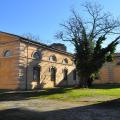
The Old Slaughterhouse and Museum of Calculating Machines
The building that houses the Museum of Calculating Machines was once the town slaughterhouse. It was completely renovated and re-styled in the late...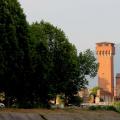
Citadel Tower and Old Citadel
The 13th century was a time of military victories and flourishing sea trade for Pisa. Shipbuilding in the dockyard area (repubblican arsenal)...
Palazzo Reale, National Museum
Palazzo Reale is the result of architectural renovations by will of Grand Duke Francis I de' Medici (1583-1587) and later alterations during the reign...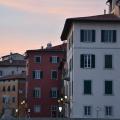
Piazza Carrara
Originally named Piazza S. Niccola, before re-styling under the Lorraines, this square was the place where, since ancient times, the game of palla con...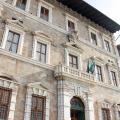
Palazzo Lanfreducci, called ‘Alla Giornata’
The palazzo was built for Fra Francesco Lanfreducci, Knight of Malta, in 1607, by the Florentine architect Cosimo Pugliano. The facade is in marble...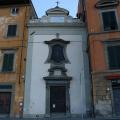
Chiesa di Santa Maria dei Galletti
The Church stands on the site of the Church of St. Salvatore in Porta Aurea documented in 1102. The present church was built by the Buzzaccherini...
Piazza Cairoli, once “dei Cavoli”, later “della Berlina”
The square as we see it it today was designed during the reign of Cosimo I de Medici, suggested by the superintendant Luca Martini. Work was done in...Chiesa di San Pietro in Vincoli
Originally, the Church of S. Pietro ai Sette Pini (by Seven Pine Trees), mentioned for the first time in 763 AD, stood on this site. No evident...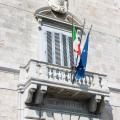
Palazzo Toscanelli (once Lanfranchi), State Archives
The first owner of the old building was Bartolomeo Lanfranchi who bought it in 1505. Albizzo Lanfranchi created a luxurious palazzo with a new facade...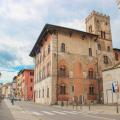
Palazzo Vecchio de’ Medici / Prefecture
The building on Lungarno Mediceo began as an ancient casa torre belonging to Albizone, a nobleman, in the 11th century.Over time it has had several...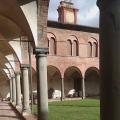
Museo Nazionale di S. Matteo, National Museum
The museum is housed in the rooms of the old Benedictine convent of S. Matteo in Soarta (11th century), little of which remains, after many...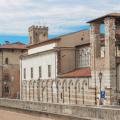
Chiesa di San Matteo
The Church and adjoining convent, belonging to Benedictine nuns, were begun in about 1027, built on the foundations of a earlier one. The church was...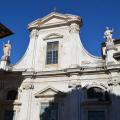
Chiesa di San Silvestro
This church was founded in about 1118 by Benedictine monks from Montecassino, who remained in possession until 1270, when it became a priory. In 1331...
Chiesa di San Michele degli Scalzi
The Church of S. Michele is in the east part of Pisa. There are records of it from 1025 but it was re-built with a monastery attached between 1152 e...SMS, Exhibition Center at San Michele degli Scalzi
Built on the site where the Richard Ginori ceramics factory once stood and incorporating the renovated ex monastery of San Michele degli Scalzi, the...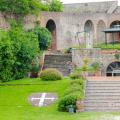
Giardino Scotto
Archaeological sources reveal that this area was already inhabited in Roman times. It was then abandoned in the early middle ages, but in 1095 the...Chiesa di Santa Croce in Fossabanda
In 1238, in a place east of Pisa called Fossabandi (now "Fossabanda") because of a channel that drained the marshes, lived some Dominican nuns. Their...Palazzo Lanfranchi
This palazzo takes its name from the Lanfranchi family who re-structured it and lived in it from 1539.The building is the result of amalgamating seven...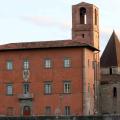
Chiesa di San Sepolcro
This octagonal Church, built from locally quarried stone and lit by slit windows, is octagonal in shape with a pyramidal cone-shaped roof rising from...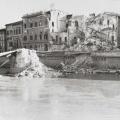
Palazzo Pretorio
The aim of alterations in the 18th and 19th centuries was to renovate buildings and change their medieval appearance; the Government building or...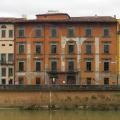
Palazzo Mosca , inizio XII- XVII secolo
Palazzo Mosca is a combination of several buildings dating from the late 12th century and after. The freestanding pilasters of the facade are coupled...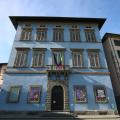
Palazzo Giuli Rosselmini Gualandi - Palazzo Blu
In the 1300s, Palazzo Blubelonged to the Dell'Agnellos, an important family in the political and economic history of Pisa. The central and western...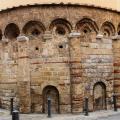
Chiesa di Santa Cristina
Mentioned for the first time in the 8th century, the Church of St. Christina is reported after the year 1000 to be in the area south of the river...Church of S. Maria della Spina
The Church acquired its present name when a Thorn from Christ’s Crown was donated to it in 1333. It was probably Lupo di Francesco, an artist who...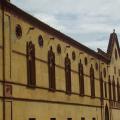
Ex Monastero delle Benedettine
The Church and convent, constructed for Benedictine nuns in 1393 in an area known as tegularia in the early middle ages, because of the many brick and...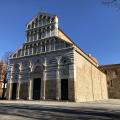
Chiesa di San Paolo a Ripa d’Arno
Recorded as already existing in 1032, the Church passed to Vallombrosan monks between 1090 and 1092; in mid 12th century the presbytery was...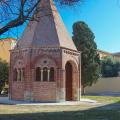
Cappella Di Sant’Agata
The chapel is first mentioned 1132. Being near the church of S. Paolo a Ripa d’Arno, its connections with this building lasted until the 16th...Sostegno and Navicelli Canal
During the reign of Cosimo I de' Medici a canal was dug from Pisa to the Old Fortress in Livorno (Fortezza Vecchia) to connect the port of Livorno and...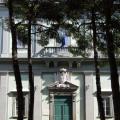
Monastero di San Silvestro
In 1332 the Dominican nuns from the convent monastero di S. Croce in Fossabanda, moved to houses standing beside the Church of St. Silvester,...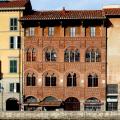
Palazzo Agostini Venerosi della Seta
Created by amalgamating several medieval buildings, the palazzo was built between the end of the 14th and the early 15th centuries. The façade...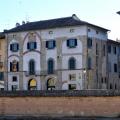
Palazzo Alliata
During the 11th and 12th centuries Chinzica, where this palazzo stands, was a rapidly growing quarter of town and many tower houses were built there....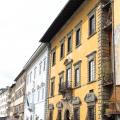
Palazzo Roncioni
This building, standing beside Palazzo Toscanelli, was created out of several medieval towers. Behind the mid 17th century facade is a large...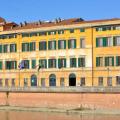
Palazzo Vitelli
Like many other buildings along the Arno, Palazzo Vitelli is the result of uniting and partly demolishing several medieval case torri built after the...Piazza Garibaldi
Facing on to this square are historically important buildings that defined social and cultural life in Pisa until the Modern Age. The central...